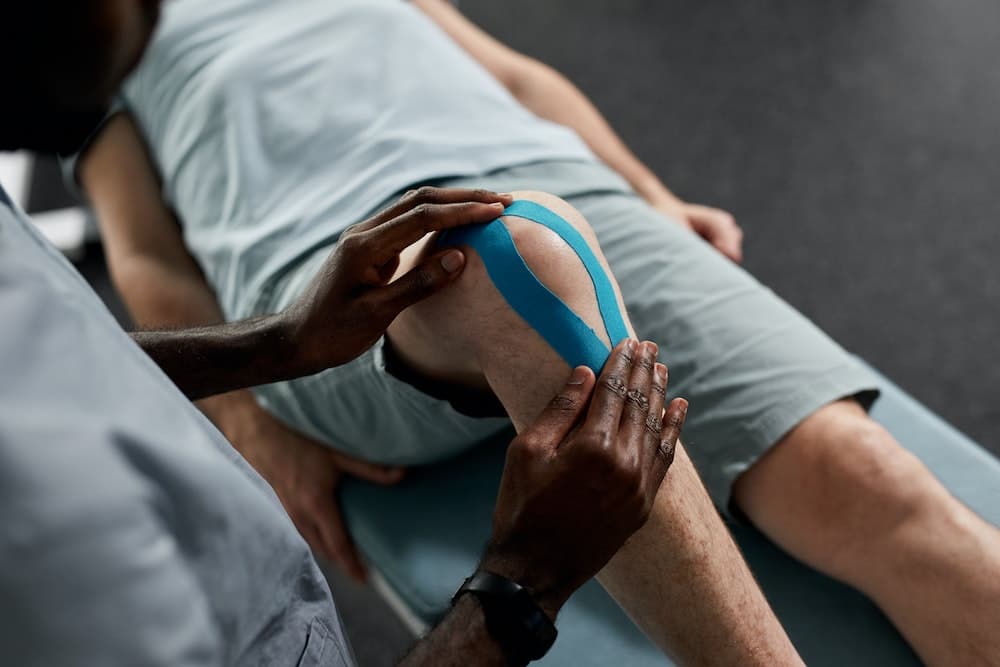How Can Balance Training Devices Assist in Recovery from Ankle Sprains in Basketball Players?

Ankle sprains are one of the most common sports injuries, particularly in high-impact sports such as basketball. High jumps, sharp turns, and quick movements make athletes more prone to this type of injury. Moreover, once the ankle has been sprained, the likelihood of subsequent sprains increases due to a condition known as lateral ankle instability. The good news is there are strategies and methods to recover from these injuries and even prevent them in the future. This article explores how balance training devices can aid in the recovery from ankle sprains in basketball players, providing both professional and amateur athletes with crucial insights.
Balance Training Devices: The Key to Ankle Sprain Recovery
Understanding the role of balance training devices in recovery requires first an appreciation of the complex anatomy of the ankle. Our ankles, the junction where our foot and leg meet, are supported by several ligaments. One of the most commonly injured ligaments is the lateral ligament, which stabilizes the outer part of the ankle. Injury to this ligament results in a lateral ankle sprain, which can lead to ongoing instability.
A découvrir également : What’s the Best Way to Teach Technical Skills in Fast-Paced Sports Like Lacrosse?
Balance training devices come in various forms, including balance boards, wobble cushions, and even interactive video games. They work by challenging the body’s stability, forcing the muscles around the ankle to work harder to keep the body upright. This, in turn, strengthens those muscles and improves the overall balance.
Evidence from Scholarly Resources: Pubmed and More
Scientific research, as reported in scholarly resources like PubMed, provides ample evidence that balance training significantly aids in recovery from ankle sprains. A study published in the Journal of Athletic Training found that a six-week balance training program significantly improved outcomes for athletes recovering from ankle sprains. Participants reported fewer symptoms of instability and less pain compared to those who did not participate in balance training.
Avez-vous vu cela : What’s the Best Technique for Maximizing Kinetic Energy in Hammer Throwers?
Another study from the American Journal of Sports Medicine found that balance training was effective in reducing the risk of repeat ankle sprains in basketball players. Athletes who participated in balance training were less likely to experience another sprain within the next year.
Balance Training Exercises for Ankle Sprain Recovery
So, what does balance training look like for a basketball player recovering from an ankle sprain? The exercises vary in complexity, but all aim to improve stability and strength around the ankle.
For beginners, standing on one foot is a simple yet effective exercise. This can be done on a flat, stable surface initially, and as balance improves, can be progressed to unstable surfaces like a balance board or cushion.
As balance improves, athletes can incorporate more complex movements like squats or lunges on the balance device. High-level exercises might include sport-specific movements, such as jumping and landing on a balance device.
Implementing Balance Training in Your Recovery Plan
Adding balance training to your recovery plan post ankle sprain should be done under the guidance of a qualified healthcare professional, such as a physical therapist. They will be able to provide a personalized exercise program based on your specific needs and progress.
Remember, the goal of balance training is not only to recover from the current injury but also to prevent future sprains. Consistency is key. Regular balance exercises, even after the ankle has healed, can keep those supporting muscles strong and your ankles stable.
The recovery journey from an ankle sprain can be complex, but with the right tools and guidance, basketball players can bounce back stronger than before. Balance training devices play a crucial role in this journey, providing a scientifically-backed method to improve stability, strength, and overall performance. Remember, the intention should not only be to recover from the injury but also to reduce the risk of future injuries. As such, balance training devices should be considered an essential part of any basketball player’s training kit.
High-Impact Balance Training in Prevention of Ankle Sprains
Basketball is a high-impact sport that is heavily reliant on the player’s ankle strength and stability. Consequently, the risk of ankle injuries, including sprains and chronic ankle instability, is higher. However, proactive measures such as high-impact balance training can help prevent these injuries.
High-impact balance training typically involves movements that mimic the demands of the sport, like jumping and landing on a balance device. These exercises train the ankle to withstand the forces experienced during the game, increasing its resilience. They also improve the range of motion of the ankle, enhancing the player’s agility and performance on the court.
A systematic review of several studies available on PubMed Google and Google Scholar suggests that high-impact balance training can reduce the risk of ankle sprains in basketball players by up to 40%. It is also recommended by the American College of Sports Medicine as a crucial part of injury prevention programs for athletes.
Remember, balance training is not a one-time affair. Regular practice is essential to maintain the strength and stability gained. Ideally, balance training should be incorporated as a regular part of the player’s training regime, not just a reactive measure post-injury.
Concluding Thoughts: Balance Training – A Game Changer
In conclusion, balance training devices and exercises present a significant opportunity for basketball players to recover from ankle sprains and reduce the risk of future injuries. They work by strengthening the muscles around the ankle, improving stability, and enhancing the range of motion.
According to free articles on PMC and from scholarly resources such as Google Scholar and PubMed, balance training also plays a crucial role in preventing subsequent sprains, reducing the risk by up to 40%. Therefore, balance training should be a standard part of a basketball player’s training regime, whether they have experienced an ankle injury or not.
Whether you’re a professional basketball player or an amateur enthusiast, balance training can make a significant difference in your performance and your injury resilience. It’s an investment in your health and your sport that can yield high returns in the long term. So, along with physical therapy and proper rest, ensure to incorporate balance training in your recovery and prevention plan for ankle sprains. It could be the game-changer you need.
